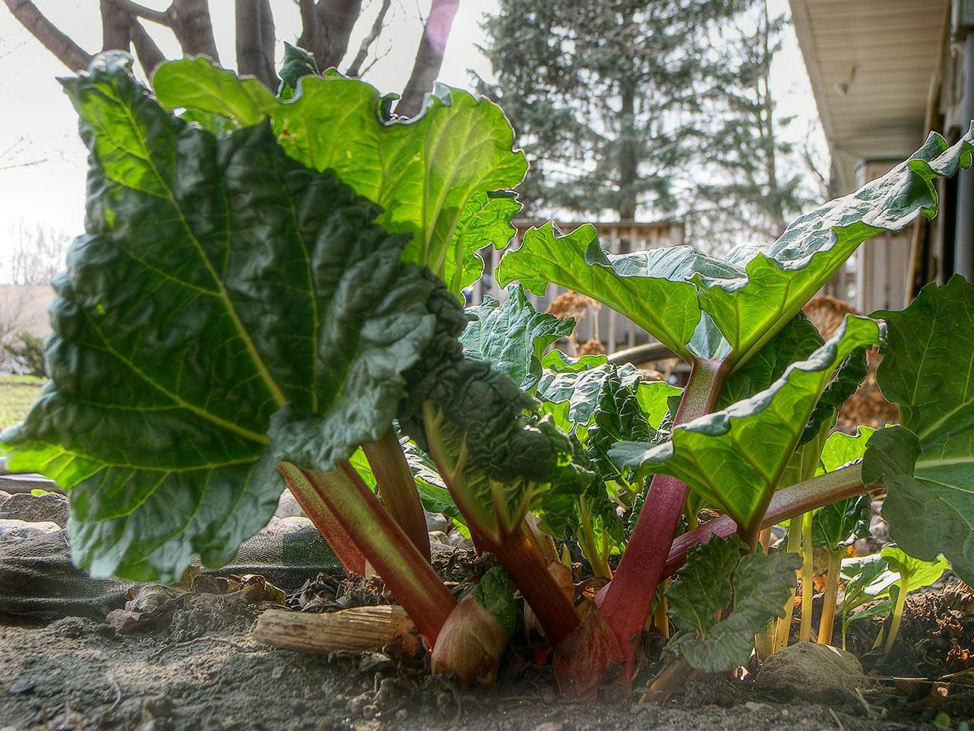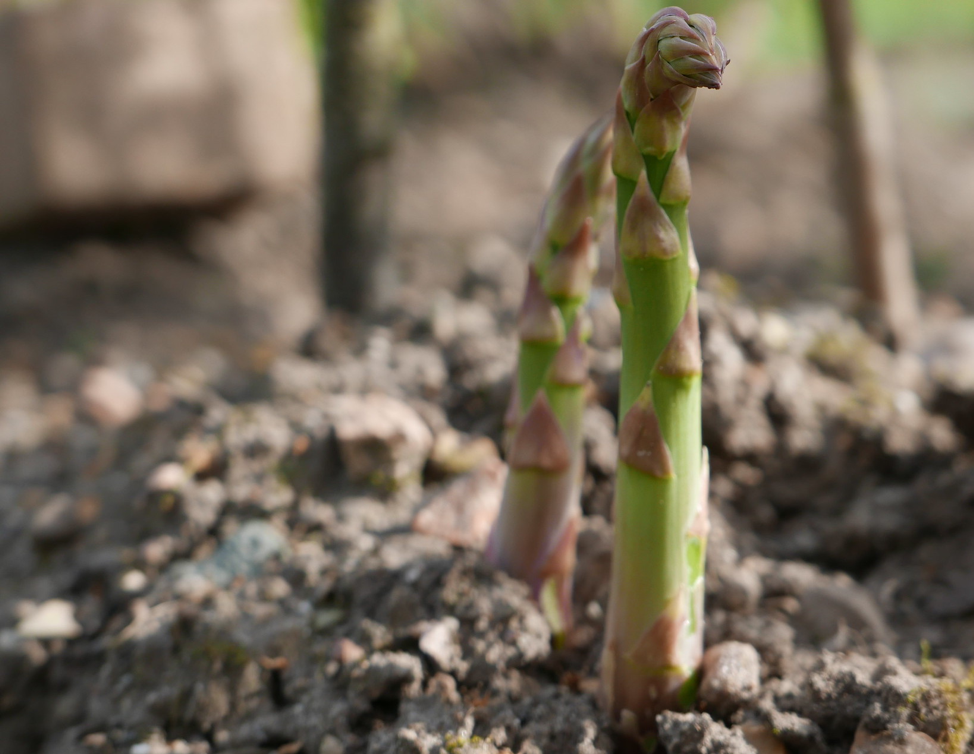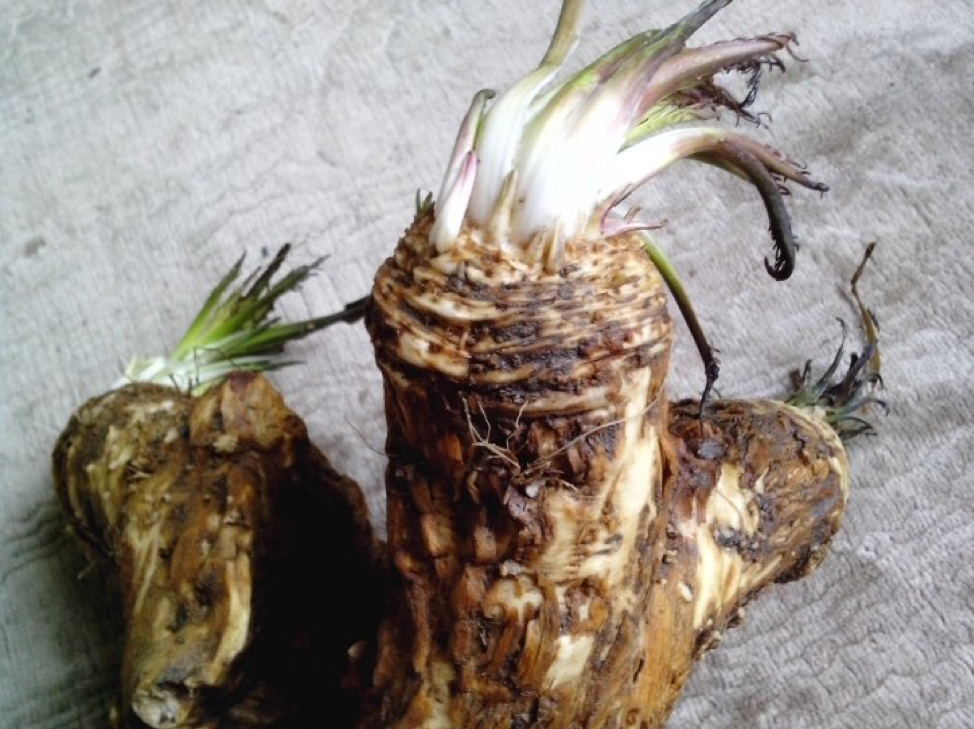
-Mike Weeks-
So here we are, back to that time of the season when gardeners get that itch to get out and start planting something. This post will focus on the gift that keeps on giving: edible perennials. Fruit trees, berries, and perennial vegetables provide a bounty year after year, and now is the best time to plant them. In this post, I’ll cover planting and care basics for a few of our most sought after selections.
Strawberries
These can be planted in early spring and will need a year to get established before they really start producing fruit. It is recommended to pull the first round of flowers so that the plants can focus on growth, but I can also support leaving a few flowers to get a preview of the flavor after the fruit develops.
The two groups of strawberries are June-bearing and Ever-bearing. They are very similar, except June-bearing will produce the majority of its fruit all at once (good for pies and jams) and are generally heavier producers, while Ever-bearing will produce fewer berries more steadily throughout the growing season (good for snacking and salads). Both plants produce runners (new plants) shortly after the berries ripen, but June-bearing will produce more because they don’t have to focus on producing fruit any longer.
Cultivation Tips:
- Strawberry plants like to be planted with the crowns even with the ground. Burying them too deep or too shallow will result in stressed plants.
- pH should be between 5.5 and 6.5 (slightly acidic)
- Fertilize with Fertrell Berry Mix or Happy Frog Acid Loving Plants Fertilizer in early spring.
- Watch out for slugs as berries ripen. Use Sluggo as a preventative pest control.
- Consider bird netting to keep rabbits and other pests from nibbling on the berries.

Rhubarb
This has to be one of the easiest plants to grow, but it does take some site preparation prior to planting. Also consider that the stems are the only edible part of the plant, so if you have free roaming kids, be sure to teach them that the leaves are toxic and should not be consumed. The stalks, however, go well in pies (strawberry-rhubarb, anyone?) and many other desserts due to the tart flavor. Rhubarb grows best in compost-rich, nutrient dense soil. It will do best if you establish a nice mulch layer around the base and perimeter of the growing area so that the weeds don’t encroach on them.
Cultivation Tips:
- Prepare a nice hole for the plant at least 18” in diameter. Plant with plenty of compost mixed with a splash of soil conditioner and native soil (if it’s actually soil).
- Apply a blended organic fertilizer slightly higher in nitrogen, such as Foxfarm’s Happy Frog All Purpose Fertilizer, in early spring before the stalks arise.
- Cut flower spikes off as they appear, to promote growth.

Asparagus
While it may take some time and effort to set this perennial up for success, it is well worth it when these crowns start producing (and keep producing year after year). With hybridized male varieties, which is what’s commonly offered at most garden shops, production of spears can really pick up after a couple years. Look to purchase crowns, which are dormant plants that are already established enough to cut some time until harvesting, as opposed to growing asparagus from seed. Even growing from crowns, you’ll want to refrain from harvesting anything the first year and only very sparingly the second year while the bed is maturing and filling out.
Raised beds are generally the best place to grow asparagus. Dedicate an entire bed to it and plant nothing else with it, and never, never allow any weeds to move in. Asparagus grows best in nutrient-dense, but well-drained soil, and does not do well in soggy conditions. It does, however, like a consistent amount of moisture, so don’t allow the soil to dry out. Fertilize once at the onset of spring. You’ll want to mulch the beds once everything goes dormant.
Cultivation Tips:
- pH should be 6.0 to 7.0, so consider some dolomitic lime if you have acidic soil.
- Asparagus beetles are a common issue. Monterey Garden Insect Spray and Beneficial Nematodes will help control these.
- Grows best in full sun.

Horseradish
If you like a little spice in your life, this plant is perfect for you. Horseradish crowns are planted in early spring in a sandy loam or even enriched clay soil. Prepare a planting site with about a 12 inch hole and amend with compost. Plant the root at a 45 degree angle with the top stopping about 2 inches below the soil. Once the sprouts emerge, mulch around the base to help with moisture retention and weed suppression.
Horseradish should be planted away from vegetable beds, as it can spread and claim territory. Do not till up the roots or discard any roots in the compost pile or you will risk spreading them all over your garden. Harvest time should happen after the first frost when the leaves look exhausted. Carefully dig up the main root, while including the side shoots.
Cultivation tips:
- Horseradish grows best with a pH range of 5.5 to 6.8
- Consider a border or container if you have small planting areas to prevent the spread of the shoots

Leave a Reply